FODS Featured in the Monthly Dirt Article June
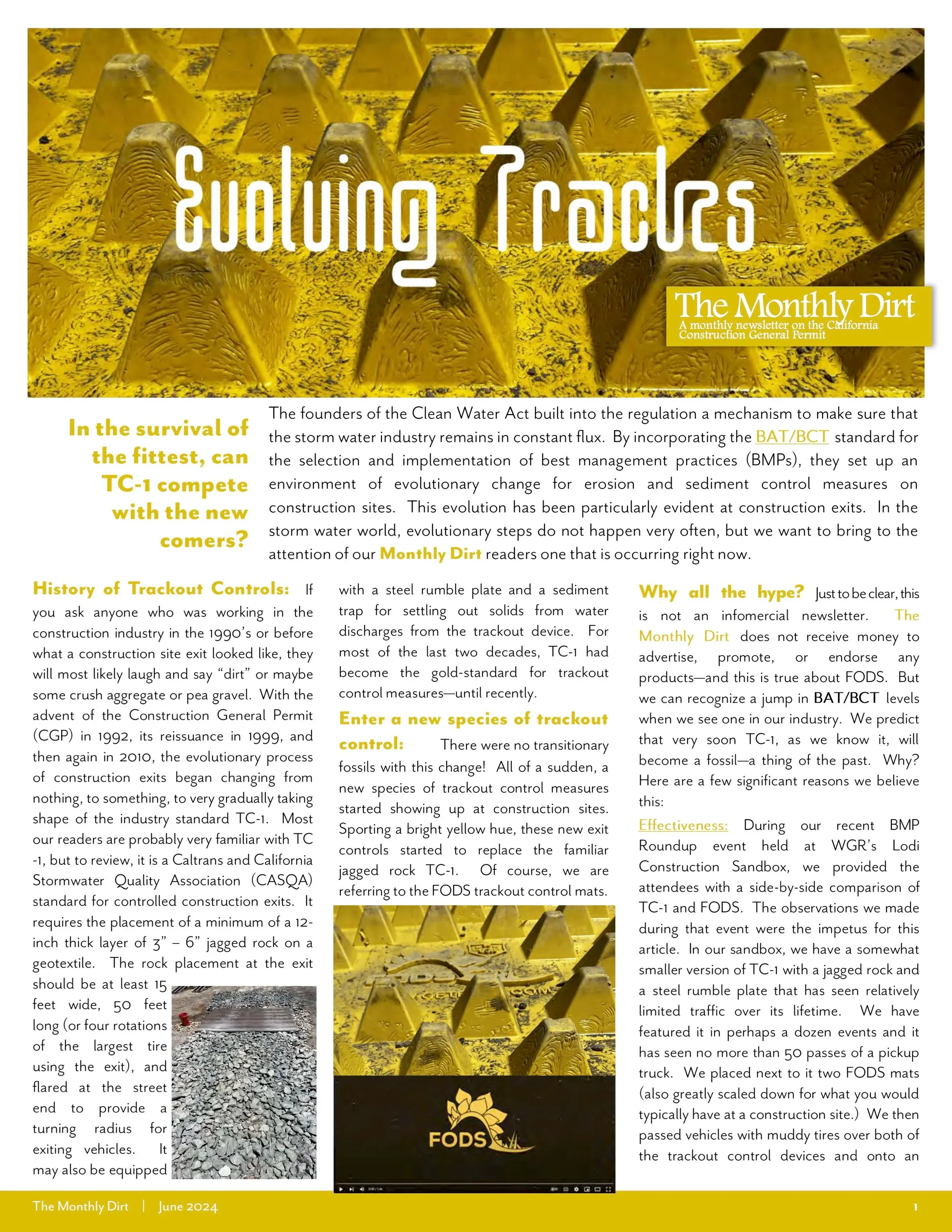
In the survival of the fittest, can TC-1 compete with the new comers?
The founders of the clean water act built into the regulation a mechanism to make sure that the storm water industry remains in constant flux. By incorporating the BAT/BCT standard for the selection and implementation of best management practices (BMPs), thye set up an environment of evolutionary change for erosion and sediment control measures on construction sites. This evolution has been particularly evident at construction exits. In the storm water world, evolutionary steps do not happen very often, but we want to bring to the attention of our monthly dirt readers one that is occurring right now.
History of Trackout Controls:
If you ask anyone who was working in the construction industry in the 1990s or before what a construction site exit looked like, they will most likely laugh and say “dirt” or maybe some crushed aggregate or pea gravel. With the advent of the construction general permit (CGP) in 1992, its reissuance in 1999, and then again in 2010, the evolutionary process of construction exits began changing from nothing , to something, to very gradually taking shape of the industry standard TC-1. Most of our readers are probably very familiar with TC-1, but to review, it is a Caltrans and California Storm Water Quality Association standard for controlled construction exits. It requires a minimum of a 12-inch-thick layer of 3” - 6” jagged rock on a geotextile. The rock placement at the exit should be at least 15 feet wide, 50 feet long (or four rotations of the largest tire using the exit), and flared at the street end to provide a turning radius for exiting vehicles. It may also be equipped with a steel rumble plate and a sediment trap for settling out solids from water discharges from the trackout device. For the last two decade,s TC-1 had become the gold standard for trackout control measures – until recently.
Enter a new species of trackout control: there were no transitionary fossils with this change! All of the sudden a new species of trackout control measures started showing up at construction sites. Sporting a bright yellow hue, these new exit controls started to replace the familiar jagged rock TC-1. Of course, we are referring to the FODS Trackout Control Mats
Why all the hype? Just to be clear, this is not an infomercial newsletter. Monthly Dirt does not receive money to advertise, promote, or endorse any products, and this is true about FODS, but we can recognize a jump in BAT/BCT levels when we see one in our industry. We predict that very soon, TC-1, as we know it, will become a fossil – a thing of the past.
Why? Here are a few reasons we believe this:
Effectiveness
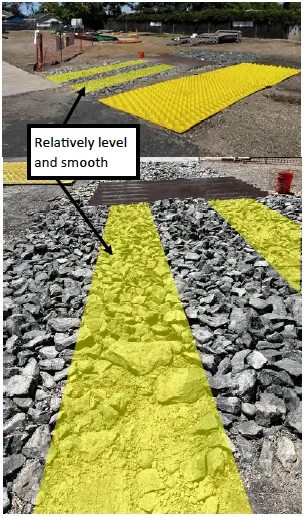
During our recent BMP round-up event held at WGR’s Lodi construction sandbox, we provided the attendees with a side-by-side comparison of TC-1 and FODS. The observations we made during this event were the impetus for this article.
In our sandbox, we have a somewhat smaller version of TC-1 with jagged rock and a steel rumble plate that has seen relatively limited traffic over its lifetime. We have featured it in perhaps a dozen events and it has seen no more than 50 passes of a pickup truck. We placed next to it two FODS mats (also greatly scaled down for what you would typically have at a construction site.) We then passes vehicles with muddy tires over both of the trackout control devices and onto an adjoining paved parking lot and measured the tracked out sediment paths on the asphalt but this is where we made our first big observation. Although our TC-1, at first appearance (especially by itself), looked pretty good, when compared to the adjacent FODS mat, we noticed something we had not detected before. Although there was plenty of jagged rock that was relatively sediment-free, the traveled surfaces on the TC-1 had become relatively flat. Even in our very limited use of the control measure the rock had been pushed down to form a fairly level travel path. Our first clue was the difference in the amount of rocking and rolling while transiting across the two trackout systems. This made us look closer at the TC-1 path and what it was doing to the tires (or not doing.) It became immediately apparent which system was applying more pressure points on the tire. Of course, the rumble plate was doing a pretty good job of applying pressure, but for a much shorter distance than the FODS.
Maintenance
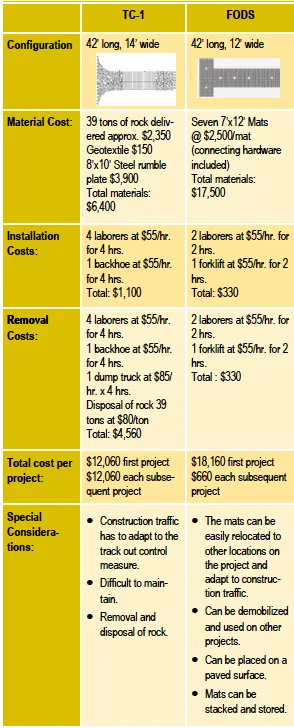
Anyone who has tried to remove sediment build up from a TC-1 knows how difficult the task is. Trying to “fluff” up a TC-1 with a piece of equipment can end up destroying it. The main way to remove sediment is to use a fire hose to wash out the sediment from the rock layer pushing it into the sediment trap where it can settle out. But this is very labor intensive, it can result in copious amount of dirty non-storm water, and is not effective for clayey soils. Because FODS mats can be easily turned over with a piece of equipment, it makes cleaning them so much easier. They can also be washed out with water into and adjacent sediment trap or for light dry accumulations, they can be manually cleaned using a shovel (especially designed for them), a broom, or even with a backpack blower (assuming you’re not creating a non compliant dust cloud.)
Cost
But the number one reason why we believe TC-1 will go the way of the dinosaur is because of cost. The monthly dirt priced out the installation and removal of systems for a 42’ long exit that was atleast 12’ feet wide. For this estimate, we obtained a quote for the materials and we used the rates specified in the 2024 Caltrans Labor Surcharge and Equipment Rates and the California Department of Industrial Relations 2023 Prevailing wage Determination.
The Monthly Dirt want to hear from you! Are you observing this evolutionary change? Send us photos of this or other new species of trackout control that you are seeing on your job sites and provide comments concerning the effectiveness of the newcomers.
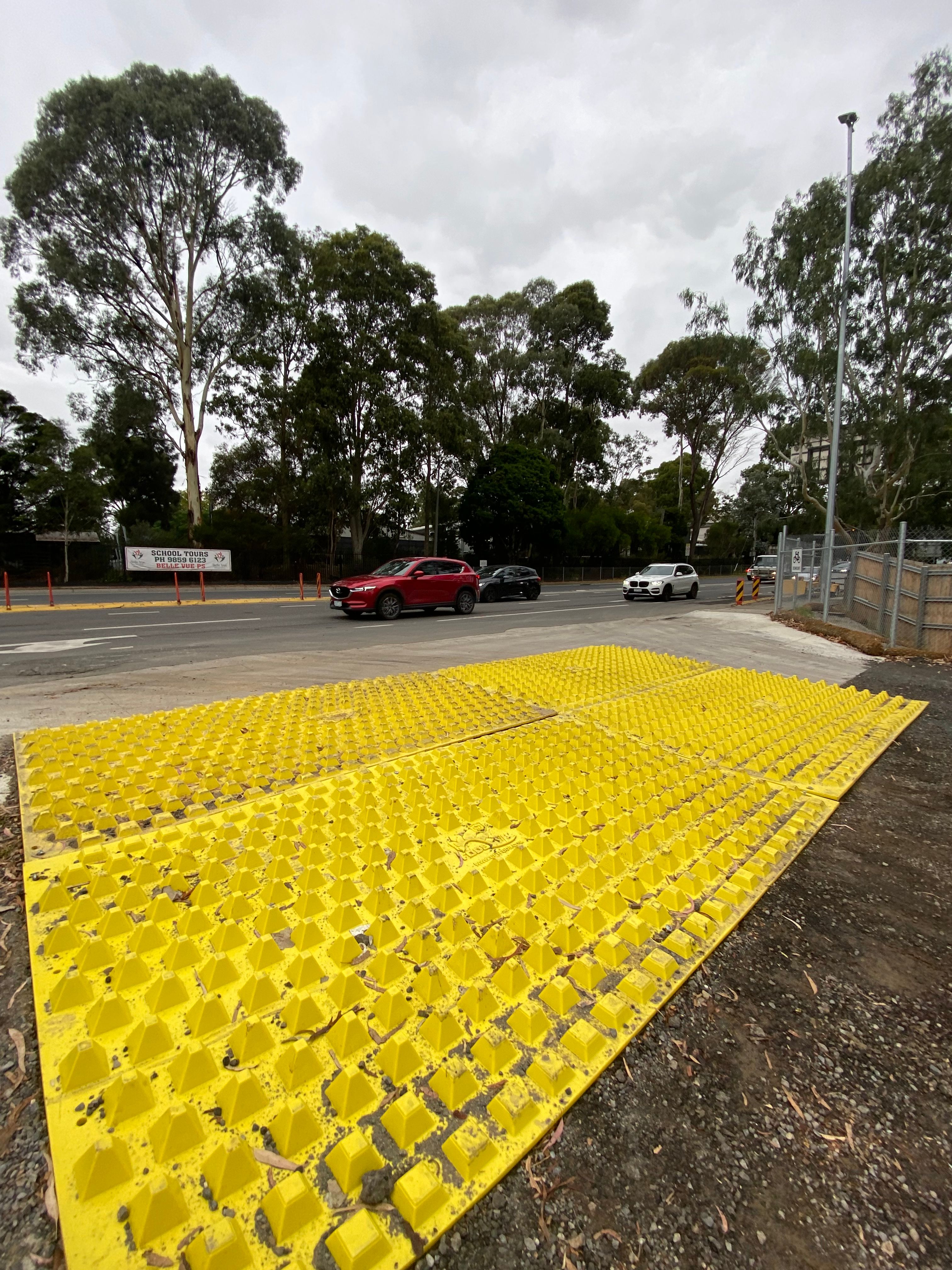
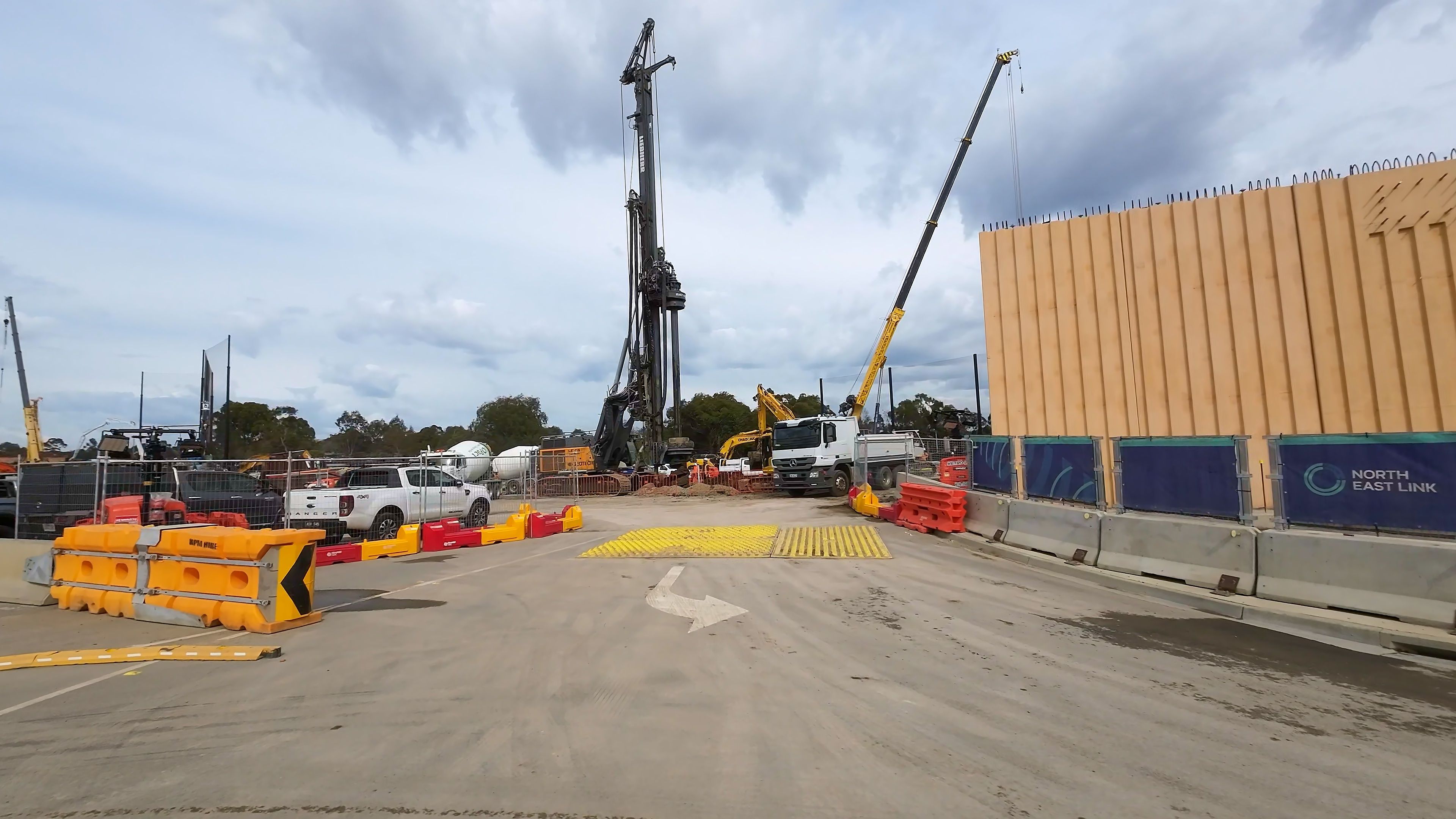
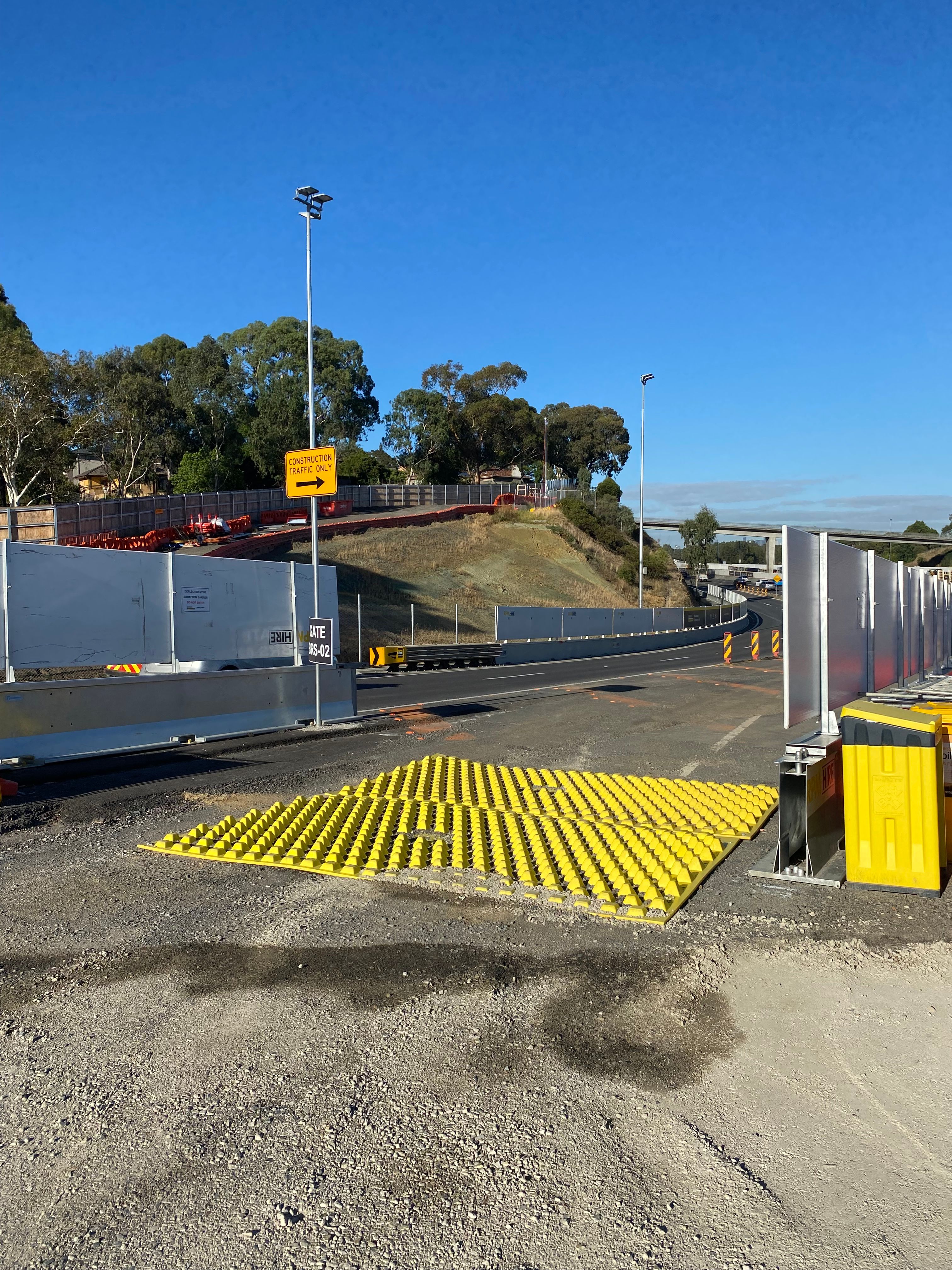
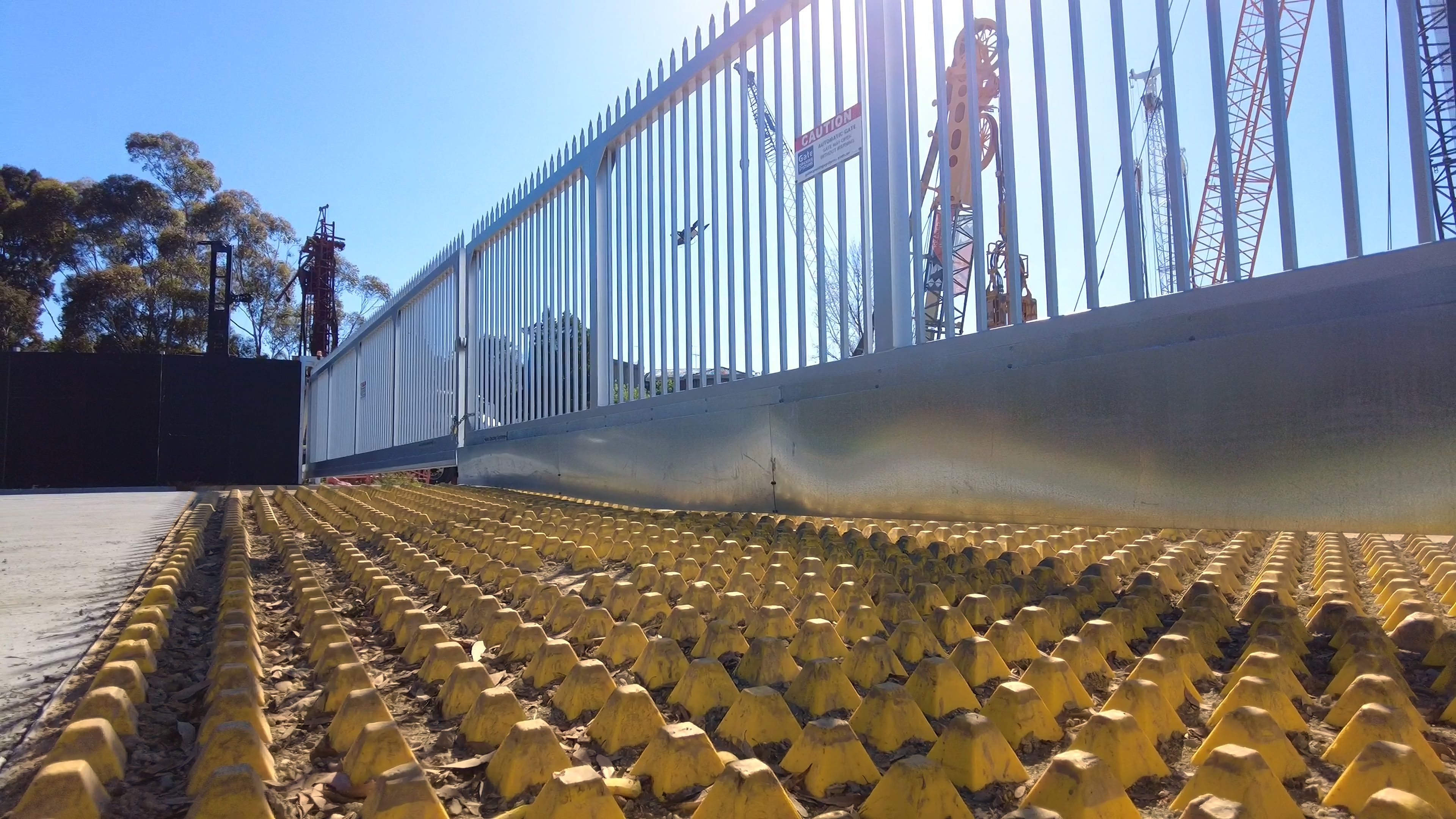
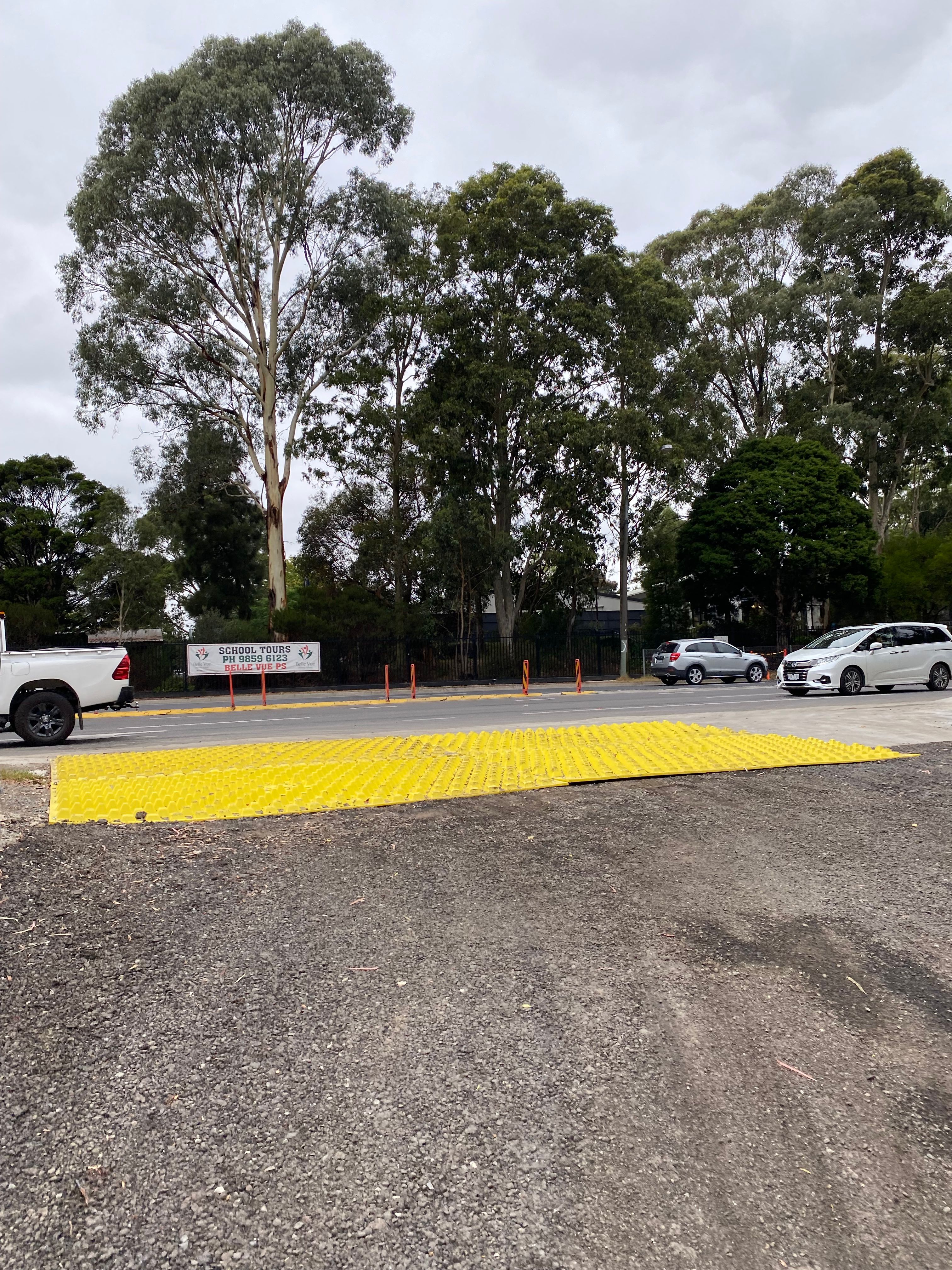
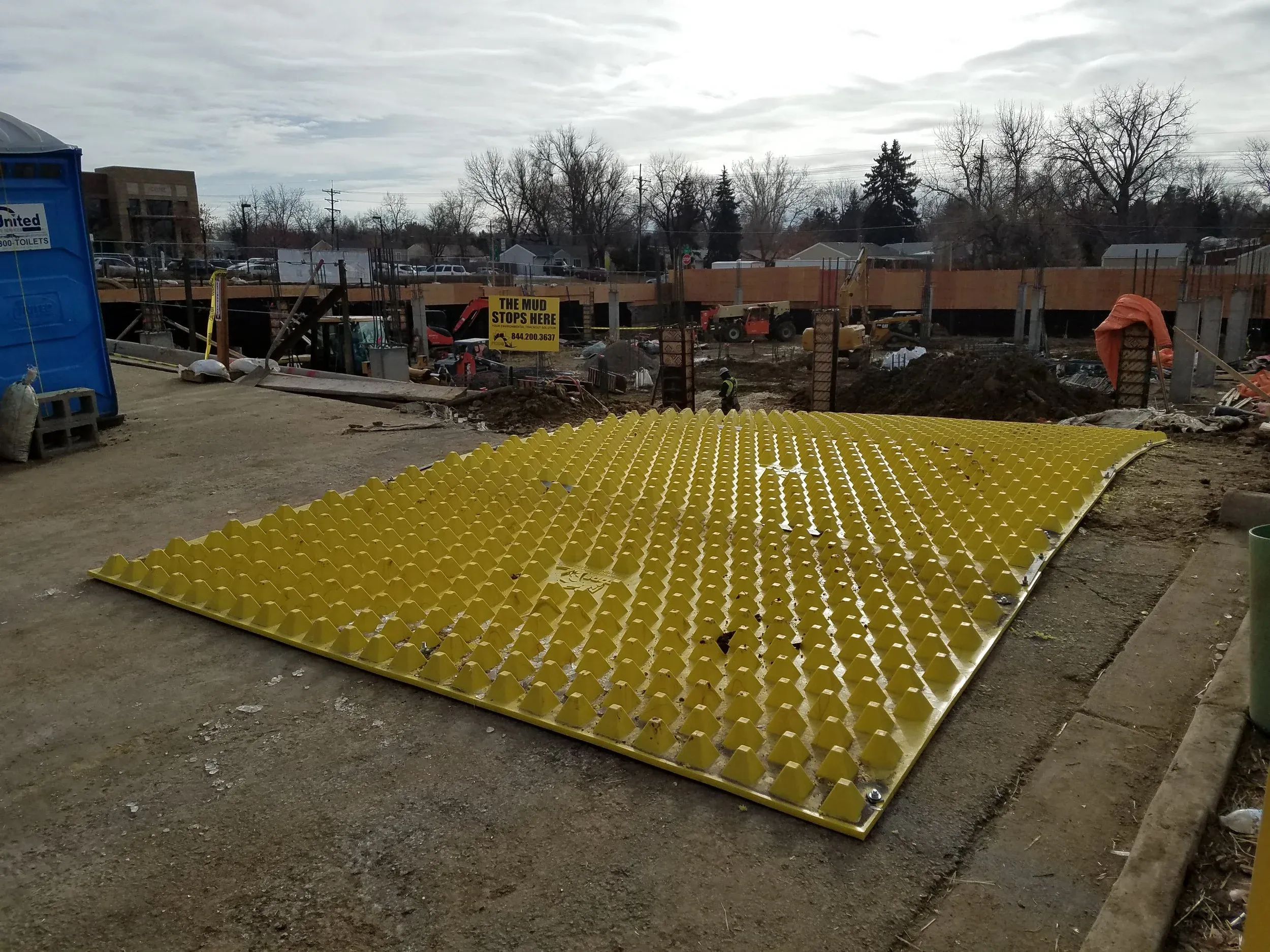

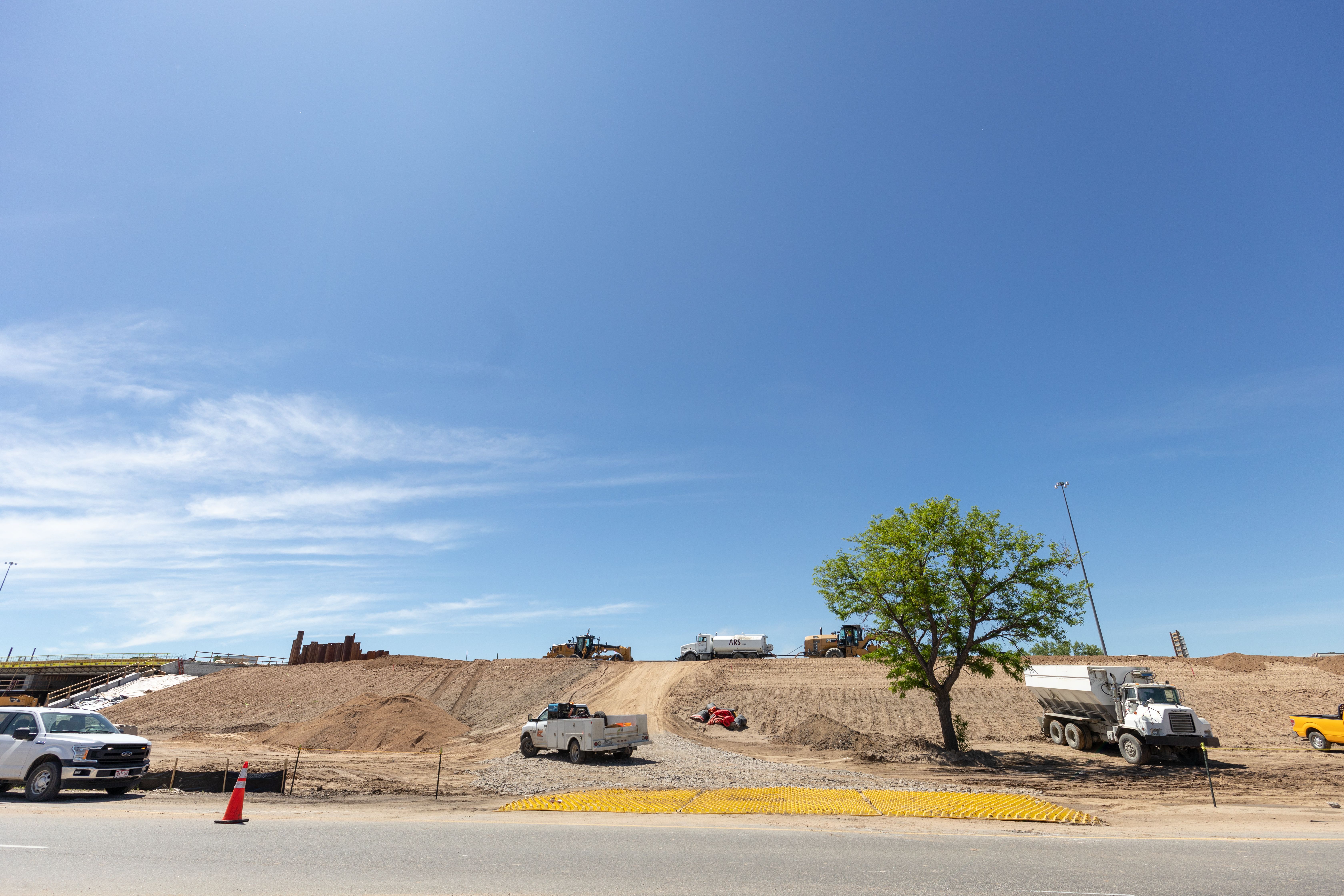
0/8
ABOUT FODS, LLC.
Based in Centennial Colorado, FODS is working to replace ineffective and costly traditional rock stabilized construction entrances, saving you time and money. Our proprietary mat design works to effectively remove debris from your vehicle tires without damaging the tire or the ground’s surface. We provide the only durable, reusable, and environmentally friendly trackout control system currently available on the market. FODS Vehicle Trackout Controls BMP mats are 100% Made In the USA and 100% recyclable.
To find out more information on how we can help your project stay on schedule and in compliance contact 844-921-6967 or email us at info@getfods.com.


